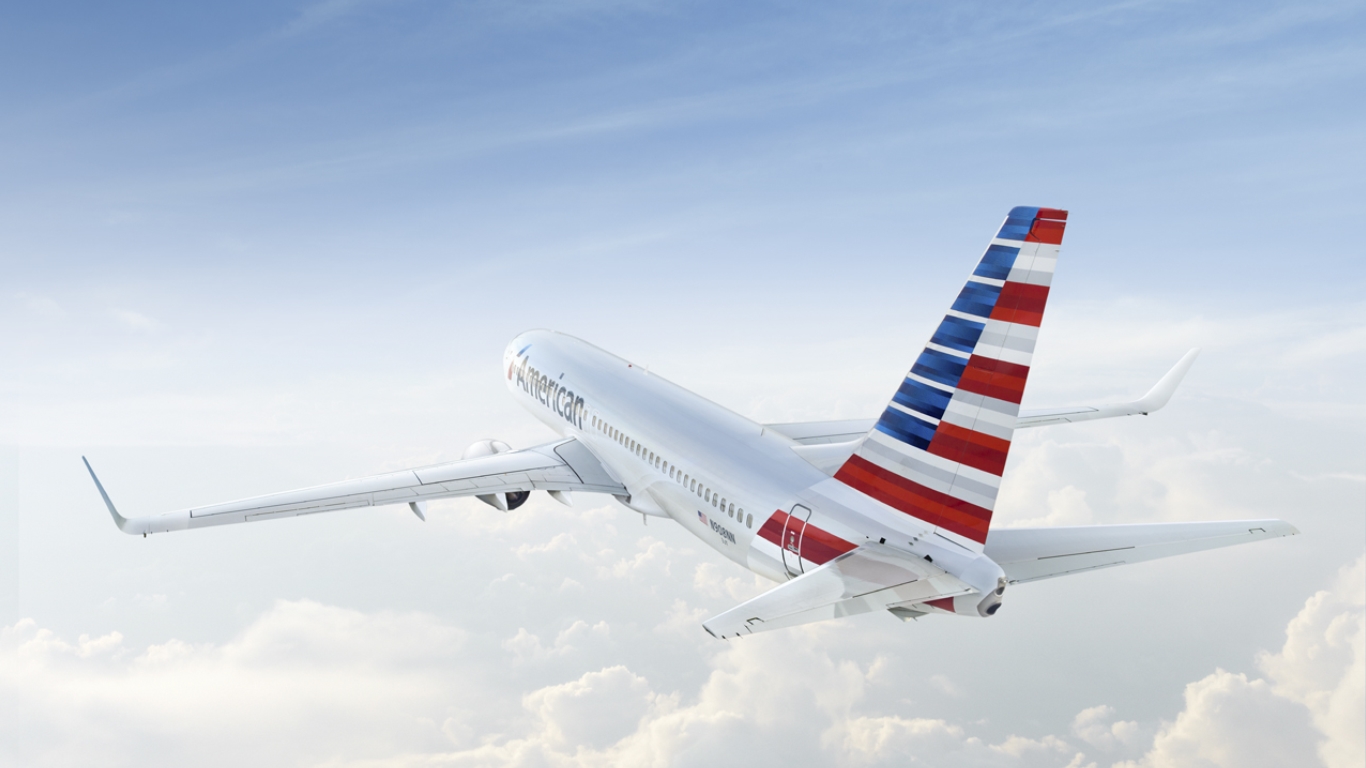
The COVID-19 pandemic delivered a severe blow to the airline industry. At the low point last May, airline stocks were down between 50% and 80%. By the end of the year, the range had drifted higher, to down from around 14% to 51%.
The year-to-date numbers have been if not a complete turnaround, certainly a strong one. Share prices have improved by a minimum of around 28% to a high of 54%. Even with the May 2020 trough, share prices for the past 12 months have increased between about 110% and nearly 190% for six major U.S. carriers.
Analysts at Morgan Stanley think that the industry is going to recover both faster and with better results than consensus estimates anticipate. They write: “We see ~30% upside to our price targets and 45% upside to consensus 2023 estimates, on average, driven by quick rebound of air traffic, structural cost savings and a supportive jet fuel environment.”
What all that adds up to is more demand from people who have been cooped up for more than a year now. The analysts add a little color: “We also believe a Roaring ’20s/Swinging ’60s-like macro environment can drive traffic significantly higher than a 2019 baseline level, in a bull case.”
A congenial macro environment along with renewed demand offers margin growth to those carriers that have achieved cost savings or set goals to meet those savings. Morgan Stanley particularly called out the efforts of United, JetBlue and American in this regard: “These targets imply margins should be comfortably higher than 2019 levels, if 2022/23 revenues are at a similar level, as we expect.”
Finally, the airline analysts cite their energy team partners who believe that oil prices will stabilize at $50 to $55 a barrel, lower than current prices around $60. Lower fuel prices also translate into better margins.
Finally, here are the risks the Morgan Stanley team see: “Risks to our bullish view include another black swan macro event, labor shortages/disruptions, runaway inflation that pressures the consumer’s balance sheet, safety issues (like COVID resurgence or MAX in 2019) and sharp jet fuel inflation could put our 2022/23 estimates at risk.”
Here are the latest ratings and price targets for the six major carriers the bank’s analysts reviewed.
Morgan Stanley upgraded its rating on Alaska Air Group Inc. (NYSE: ALK) to Overweight and raised its price target from $49 to $90 a share. The consensus target on the stock is $70.75, and shares traded above that Tuesday morning, after setting a new 52-week high of $73.90. At the new price target, Alaska Air offers a potential upside of around 22% to the current trading price. The airline’s stock has added 188% over the past 12 months, the largest gain of any of the airlines in this group.
JetBlue Airways Corp. (NASDAQ: JBLU) was reiterated at Overweight but the analysts raised their price target from $18 to $30. The consensus price target is $18.77, and shares traded at around $22 shortly after Tuesday’s opening bell. At Morgan Stanley’s target price, the potential upside is 36%. Over the past 12 months, JetBlue shares have added 192.5%. The stock posted a new 52-week high of $21.96 Tuesday, and the 52-week low is $7.34.
United Airlines Holdings Inc. (NASDAQ: UAL) was upgraded from Underweight to Equal Weight by Morgan Stanley’s analysts, and the price target on the stock was raised from $37 to $65. The consensus price target is $54.47, and shares traded at around $60.25 Tuesday morning, in a 52-week range of $18.18 to $63.70. At the Morgan Stanley price target, the potential upside on the shares is about 8.3%. The stock has added about 159% in the past 12 months.
Morgan Stanley initiated coverage of American Airlines Group Inc. (NASDAQ: AAL) with an Underweight rating and a price target of $20. While the analysts expect a rising tide in air travel to lift all carriers, they think that American’s 50% or more growth so far in 2021 no longer leaves the stock “skewed as negative[ly] as it used to be.” The analysts note that their fiscal 2023 EPS estimate is 40% below 2019 levels. The airline’s stock traded down about 0.3% Tuesday morning, at $24.15 in a 52-week range of $8.25 to $26.09. The stock, which has gained 158% in the past 12 months, has already outrun the Morgan Stanley price target and the consensus target of $17.14.
Delta Air Lines Co. (NYSE: DAL) remains Overweight, according to Morgan Stanley, but the price target was lifted from $55 to $70. The stock traded up about 2.5% Tuesday morning, at $51.50 in a 52-week range of $17.51 to $52.28. The consensus price target on the stock is $50.53. At Morgan Stanley’s target, the potential upside on the stock is nearly 36% from the current price. Delta gets a nod from the analysts as the legacy carrier with the best chance to surprise to the upside, due to its focus on controlling costs. Delta’s shares have risen about 124% over the past 12 months.
The analysts maintained their Overweight rating on Southwest Airlines Co. (NYSE: LUV) and raised their price target from $59 to $80. Shares traded up nearly 2% Tuesday morning to $64.20, after posting a new 52-week high of $64.64 earlier. The stock’s 52-week low is $22.47, and shares have added about 106% over the past 12 months. Shares already have outrun the consensus target of $63, while the stock’s potential upside at the $80 target is nearly 25%.
Credit card companies are handing out rewards and benefits to win the best customers. A good cash back card can be worth thousands of dollars a year in free money, not to mention other perks like travel, insurance, and access to fancy lounges. See our top picks for the best credit cards today. You won’t want to miss some of these offers.
Flywheel Publishing has partnered with CardRatings for our coverage of credit card products. Flywheel Publishing and CardRatings may receive a commission from card issuers.
Thank you for reading! Have some feedback for us?
Contact the 24/7 Wall St. editorial team.
